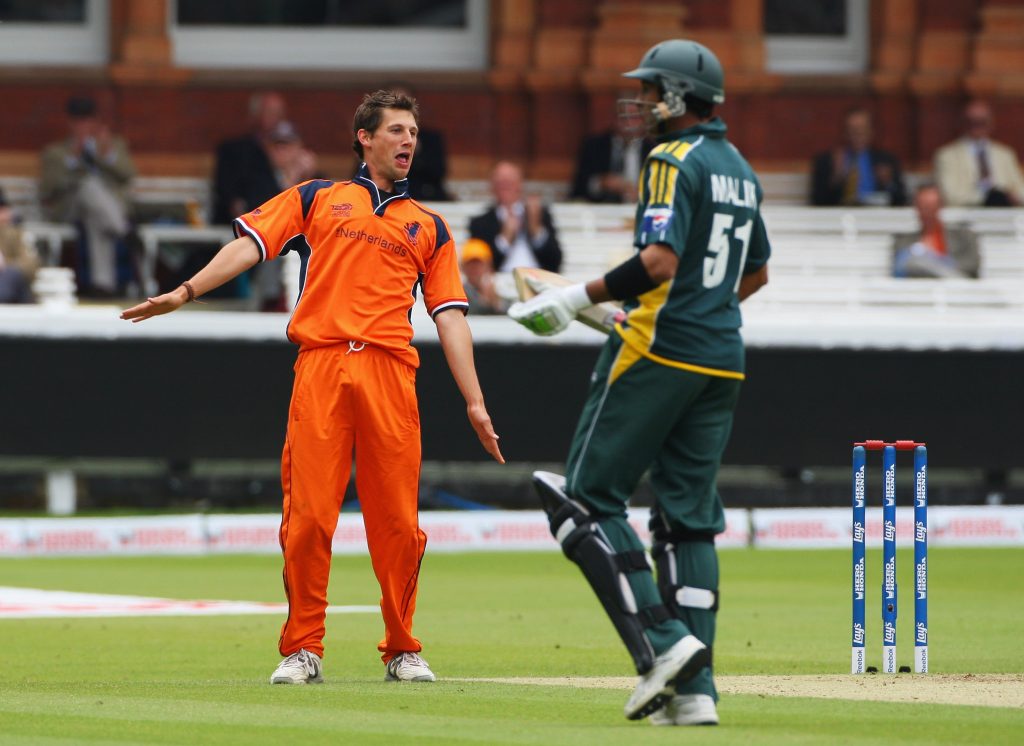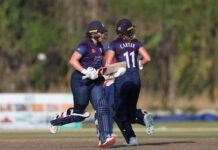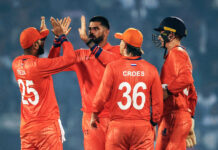As his side were battling in the field to compete with a powerful English batting line-up the news came through on Sunday afternoon that Dutch skipper Pieter Seelaar had announced his retirement from international cricket, triggering a remarkable but thoroughly deserved outpouring of tributes on social media.
Across all formats Seelaar had played 261 times for his country, making his debut in a NatWest Trophy match against Warwickshire in 2005, and scored 2338 runs at an average of 17.45 as well as claiming 235 wickets at 32.42 and taking 98 catches.
But there is much more to his story than those bare figures suggest.
Originally selected as an 18-year-old left-arm spinner who could bat a bit, Seelaar worked hard on his batting and ultimately became a genuine all-rounder, recording a first-class century in an Intercontinental Cup match against Hong Kong in 2017 in which he shared a record-breaking sixth-wicket partnership of 288 with Ben Cooper.
Some of his most memorable achievements, however, were with the ball: one recalls how he twice out-thought Steve Tikolo during a Kenyan visit to the Netherlands in 2008, trapping the great man leg-before in an Intercontinental Cup match in which he took five for 78, and then getting him caught behind in the ODI which followed.

More remarkably, he removed Virender Sehwag, Sachin Tendulkar and Yusuf Pathan to reduce India to 82 for three as they chased the Netherlands’ modest 189 in a World Cup match in Delhi in 2011, causing a mild sensation before India went on to win by five wickets.
Seelaar remained a key member of the Dutch attack, frequently managing to get the scoring rate back under control when opposing batters were threatening to run away with a game; never afraid to lead from the front, it was typical of him that in what proved to be his final ODI he should bring himself on inside the initial powerplay when Phil Salt and Dawid Malan were plundering the Dutch new-ball attack.
That said, he also produced some notable achievements with the bat: I remember a straight six he hit in an ICup game against Afghanistan in 2012, which landed on the roof on the grandstand in Sharjah, while there can be few virtuoso performances to rival his unbeaten, 49-ball 96, out of a total of 194 for seven, which he posted in a T20 International against Scotland at Malahide in 2019.
Following Peter Borren’s retirement in 2018 he was the natural candidate to take over the captaincy, and he has led the side with grace and distinction, to victory in the World T20 Qualifier in Dubai in 2019 and through the vicissitudes which have followed, last year’s disappointing T20 World Cup tournament and the very demanding Super League campaign.
For much of this latter period he has been battling the persistent back problems which have now forced his retirement just short of his 35th birthday.
His last match will no doubt be remembered for England setting a new world record one-day total, but we will also recall his first-ball dismissal of his opposite number, England captain Eoin Morgan, and for the determination with which he batted with his successor, Scott Edwards, in the closing stages of the Dutch reply.
You’re reading Emerging Cricket — brought to you by a passionate group of volunteers with a vision for cricket to be a truly global sport, and a mission to inspire passion to grow the game.
Be sure to check out our homepage for all the latest news, please subscribe for regular updates, and follow EC on Twitter, Facebook, LinkedIn and YouTube.
Don’t know where to start? Check out our features list, country profiles, and subscribe to our podcast.
Support us from US$2 a month — and get exclusive benefits, by becoming an EC Patron.







